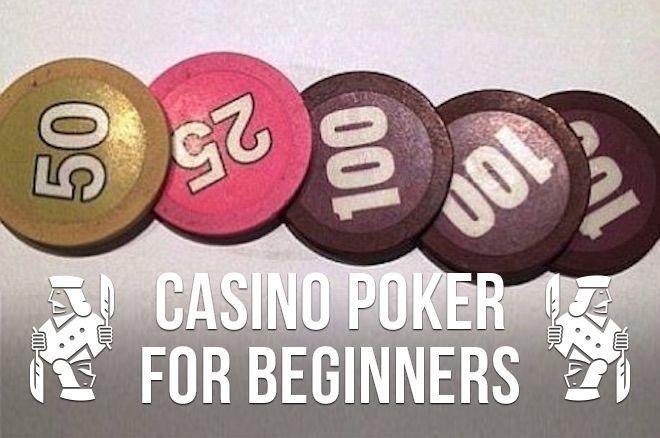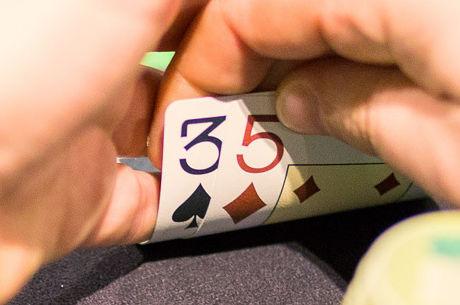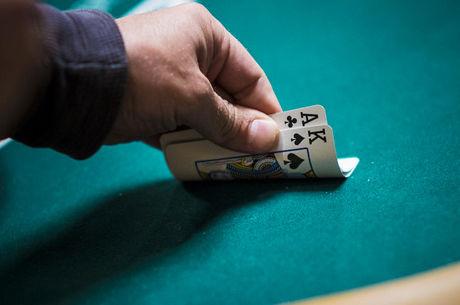Casino Poker for Beginners: Lammers, Rebuy Buttons, Add-Ons and More

Ed. note: For those who might have missed it before, we're reprising Robert Woolley's series of articles for poker players who are new to live poker. The series is great for newcomers, and likely useful as well to those with experience playing in casinos and poker rooms.
In this mini-series, I've been discussing all of the different kinds of buttons that you might encounter at casino poker tables. We're nearing the end �� just these last five to explain.
The Reduced Rake Button
Many poker rooms will reduce the rake (i.e., the fee that the house keeps from every pot as its payment for running the game) under certain conditions, such as a game being short-handed or just starting up. This is done to encourage people to play when otherwise a game might not be viable.
The "Reduced Rake" button is kept on the table near the "drop" �� the place where the raked chips are fed into a secure box under the table. The button has two purposes.
First, it reminds the dealer to take less than the usual amount from each pot. Second, it shows security personnel monitoring the dealer's actions via overhead cameras that the reduced amount the dealer is taking is authorized by the poker room supervisor. Otherwise, those monitors have no way of knowing if the dealer is making a mistake or perhaps deliberately shorting the casino's take.
This is purely an "in-house" affair �� this button does not get passed to players, and if you never noticed it was sitting there, it wouldn't change anything about how you play the game.
Lammers
"Lammer" is one of the most unusual words in the gambling world. I have never found it in standard dictionaries, and nobody is really certain of its origin. It refers to small colored disks with numbers printed on them, representing an equivalent number of dollars (see the photo up top). They are used to indicate that some amount of money, in either cash or chips, has been taken from a player or dealer.
For example, if you sit down as a new player and hand $300 to a chip runner, he or she may place on the table in front of you three small disks imprinted with "100." Similarly, if the dealer needs more chips for his tray, he will hand cash to the chip runner and be given in exchange "lammers" to show how much money is in transit.
Not all poker rooms use these, so you may not run into them. But if you do, do not take them off of the table. They should be handled only by casino personnel. The people watching through security cameras get nervous if these financial transactions are not done by the book, and casino patrons handling lammers is an irregularity that catches their attention in an unwelcome way.
Clear Lammers
Clear lammers are simple translucent plastic disks used by the dealer to count hands in mixed games.
For example, the popular game H.O.R.S.E. consists of five poker variants in rotation, with "H.O.R.S.E." being an acronym for Hold'em, Omaha high/low, Razz, seven-card Stud, and seven-card stud Eight or better. Sometimes each game will be played for a certain number of minutes, and a timer signals when to go to the next one. But more commonly, each variant is played for a designated number of hands before changing.
In the latter situation, the dealer will be given as many clear lammers as needed to mark how many hands have been played. When all of them have been moved from the dealer's left to his right (or vice-versa), it's time to move on to the next type of game.
This is another kind of button that you will run into only in very specific circumstances, and even then, you wouldn't really need to know how they're being used in order to play. But if you know, it's one less thing to wonder about while you're trying to focus on playing your best poker.
Rebuy Buttons

The rebuy button is used only in poker tournaments �� never cash games �� and not even in all of them.
Some tournaments, known as "freezeouts," do not allow a player to buy back in and start over again after busting out. In fact, this is the most common way for them to run. In this case, no rebuy buttons are needed.
In other tournaments, players are allowed to rebuy as many times as they want to, until the rebuy time period has expired. Again, when this is the case, no rebuy buttons are needed.
But a small number of tournaments have a designated number of rebuys available to a player �� most commonly just one. In those situations, each player is given a rebuy button (also called a rebuy chip) upon entering the tournament.
If you bust out, you present your rebuy button to the cashier when you buy back in. It's your proof that your rebuy is allowed. If you bust out a second time, you will no longer have a rebuy button to present to the cashier, and so won't be allowed to reenter the tournament.
Add-Ons
The "Add-On" button is very similar to the rebuy button. It is used only in some tournaments. It means that the player is allowed at any time to get more chips to add to his or her stack, for some additional fee.
It becomes a strategic decision whether and when to exercise this option, but it can be done only once, at which time you turn in your add-on button. This prevents potential cheaters from doing the add-on multiple times and thus gaining an unfair advantage.
Whew! That's a whole lot of buttons to keep track of! Fortunately, most of them are only brought out for uncommon situations. You can get by perfectly well the great majority of the time understanding just the dealer button, the missed blind button, the seat change button, and the all-in/call buttons.
But if you remember the explanations I've given here for the other ones, you'll be that much ahead of those who don't know what these buttons are on the odd occasion when one is put out on the table. It's always nice to know what's going on, and not to be caught off-guard.
In the next "Casino Poker for Beginners" article, I'll continue reviewing the equipment used in a poker room by focusing on the cards. What could there possibly be to know about a deck of playing cards, you ask? Come back and see!
Thanks to Dominick Muzio at the TI poker room and to Kristi Smith for photographs used in this series. Robert Woolley lives in Asheville, NC. He spent several years in Las Vegas and chronicled his life in poker on the "Poker Grump" blog.
In this Series
- 1 Casino Poker for Beginners: Taking a Seat in Your First Game
- 2 Casino Poker for Beginners: How to Keep or Change Seats in a Cash Game
- 3 Casino Poker for Beginners: Playing Your First Round
- 4 Casino Poker for Beginners: Rules and Etiquette Regarding Poker Chips
- 5 Casino Poker for Beginners: How to Handle Chips When Betting & Raising
- 6 Casino Poker for Beginners: Chip Rules, Chip Tricks, Collecting & More
- 7 Casino Poker for Beginners: The Deal With the Dealer Button
- 8 Casino Poker for Beginners: Missed Blinds, Seat Change & Other Buttons
- 9 Casino Poker for Beginners: Kill & Half-Kill Buttons, Overs and More
- 10 Casino Poker for Beginners: Lammers, Rebuy Buttons, Add-Ons and More
- 11 Casino Poker for Beginners: Keep Your Hole Cards Hidden
- 12 Casino Poker for Beginners: Marked Cards, Automatic Shufflers & More
- 13 Casino Poker for Beginners: Exposed Cards, Fouled Decks & Other Oddities
- 14 Casino Poker for Beginners: What It Means to 'Protect Your Hand'
- 15 Casino Poker for Beginners: When to Keep Your Cards Covered
- 16 Casino Poker for Beginners: Etiquette When Sharing Space at the Table
- 17 Casino Poker for Beginners: Bonuses, Jackpots, Drawings & Other Promos
- 18 Casino Poker for Beginners: Talking 'Table Stakes'
- 19 Casino Poker for Beginners: The One Thing You Can't Discuss at the Table
- 20 Casino Poker for Beginners: Be Careful Whenever Using 'Action' Words
- 21 Casino Poker for Beginners: Make a Mistake? Three Ways to Respond
- 22 Casino Poker for Beginners: Get to Know Poker Room Personnel, Part 1
- 23 Casino Poker for Beginners: Get to Know Poker Room Personnel, Part 2
- 24 Casino Poker for Beginners: A Few Unusual House Rules
- 25 Casino Poker for Beginners: Chopping Blinds - Etiquette & Expectations
- 26 Casino Poker for Beginners: Don't Do This When Playing With a Friend









